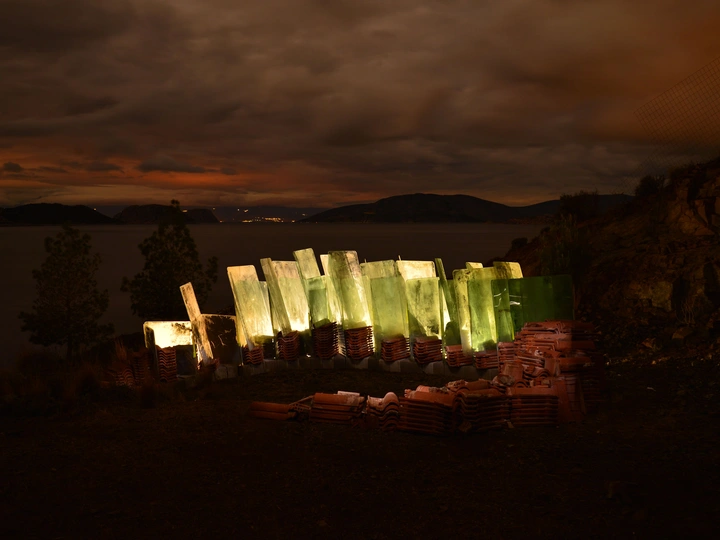More Salty Than Tears

Ursula Dimitriou is working in the composite space of architecture, art and academia. She holds a DiplEng degree from NTUA, Athens, an MA in Art and Architecture, specializing in exhibition spaces, theatre space and museums from UPC, Barcelona, and a PhD in Visual Cultures from Goldsmiths University, London. While identifying as an architect her work transcends the strict disciplinarian boundaries aiming to experiment, play and enrich the spatial experience. She designs through models, installations, texts & collages. Ursula has 12 years of teaching experience in BA and MA level in Architecture, Urban Design and Visual Cultures. Ursula is one of the founders of Performance Architecture Summer School in Athens. Her research interests are centered on commons and public space, design as a political tool, urban insurgencies, grassroot practices, theatrical and ephemeral interventions in urban space and social sustainability. Her latest work is a series of performance symposium dinners that focus on the common body of architecture. In this fantastic sculptural and partially edible cityscape guests consume and revive the body of architecture, challenging the hierarchies within academia and design practices.
Dejan Mrdja holds a DiplEngArch degree from FAUB, Belgrade, and MA Fine Art from CSM, London. He has taught architectural design at MA and BA levels. He practices architecture since 2007 and has led a range of international projects across residential, commercial, and arts & culture sectors. Dejan practices art since 2015. He collaborates with professionals from other disciplines – music, linguistics, media and architecture - his art is often participatory. He uses body-in-space, collective action, rhythm and repetition, found materials and a range of media to compose narratives. His art is spatial, tectonic, dynamic, contextual and site-specific.
Ursula & Dejan have presented their projects in exhibitions and conferences across Europe and in China and America.
The area of interest is the landscape around the gulf of Alyki, Greece that comprises a coastal village, mountains, farmland, a salt lake, an ancient castle, and rocky islands. Since WWII the development of the area was slow-paced. The village is a summer destination for local farmers of middle-to-low income and a living laboratory of Greek neo-rural . It involves micro-encroachments, informality, cheap construction materials, all in balance with the delicate ecosystem around it.
Following recent government reports claiming that the village of Alyki and its environment and have no particular public interest, Alyki became a tabula rasa for large scale industrial development. Large energy consortiums are constructing wind turbine and photovoltaic parks, without thorough consultation with local community, rigorous spatial planning and, without meeting EU standards on environmental management.
This large scale enclosure, brought to light the incredible common resource of Alyki and a rich world of communal properties and relations that were not valued until threatened with privatization.
Our proposal starts from an umbrella of landscape and visual arts projects realized in Alyki since 2020 and on our research on the commons, their immaterial properties, and on commons yet-to-come.
We intend to examine the landscape of Alyki focusing on its immaterial properties. We will use non-quantitative research methods, such as performance architecture and sensorial architectural representation, which are highly effective for dissemination of spatial concepts.
The work has broad implications, as aside from being a local example, Alyki is representative of a large percentage of the Greek land.
The purpose of this investigation of the Greek “neo-rural” is to voice, highlight and advocate for this particularly vulnerable and subtly-stratified landscape type, increase its agency, and fortify it as an idiosyncratic landscape category in face of brute capitalist advancement.